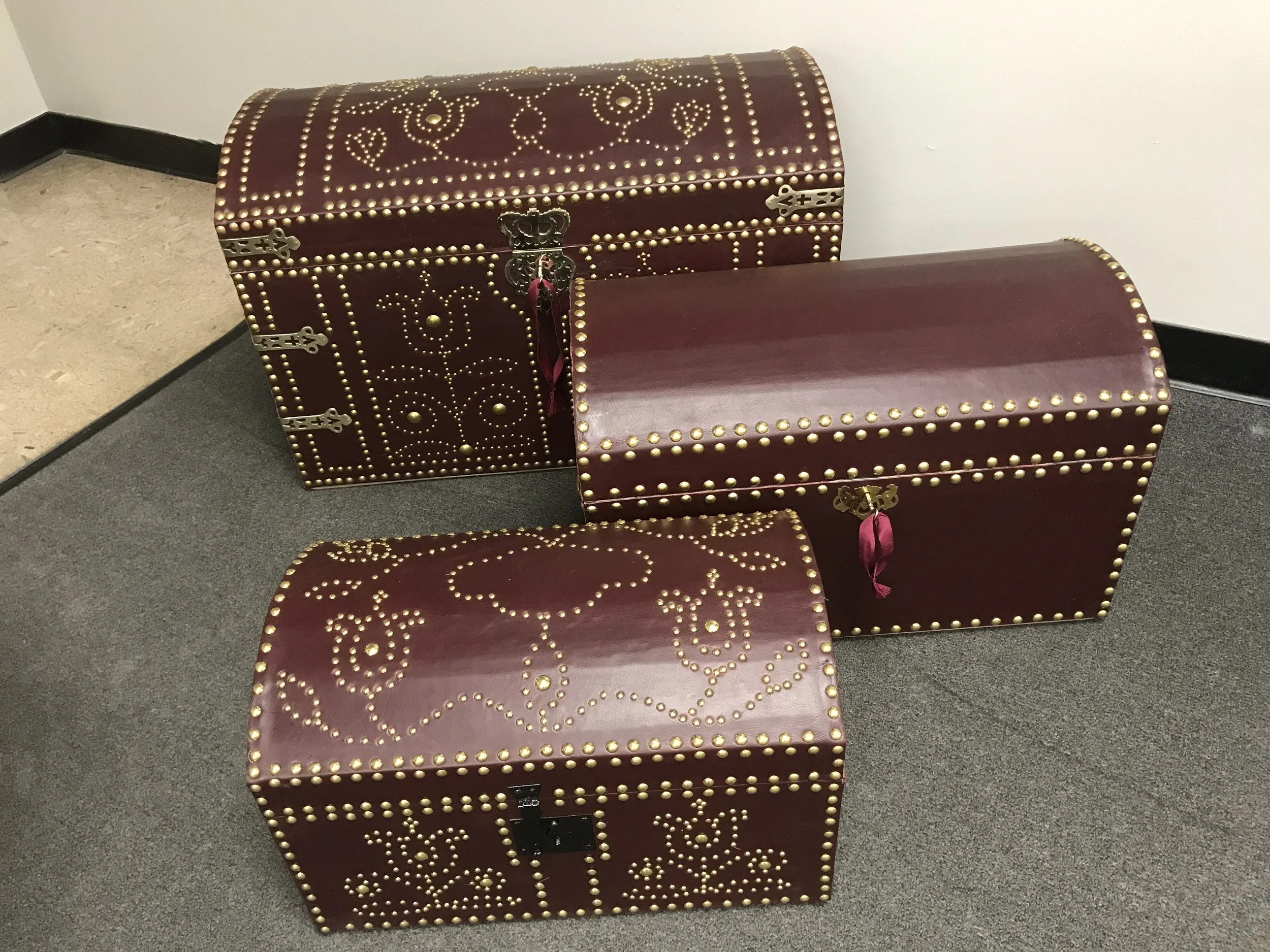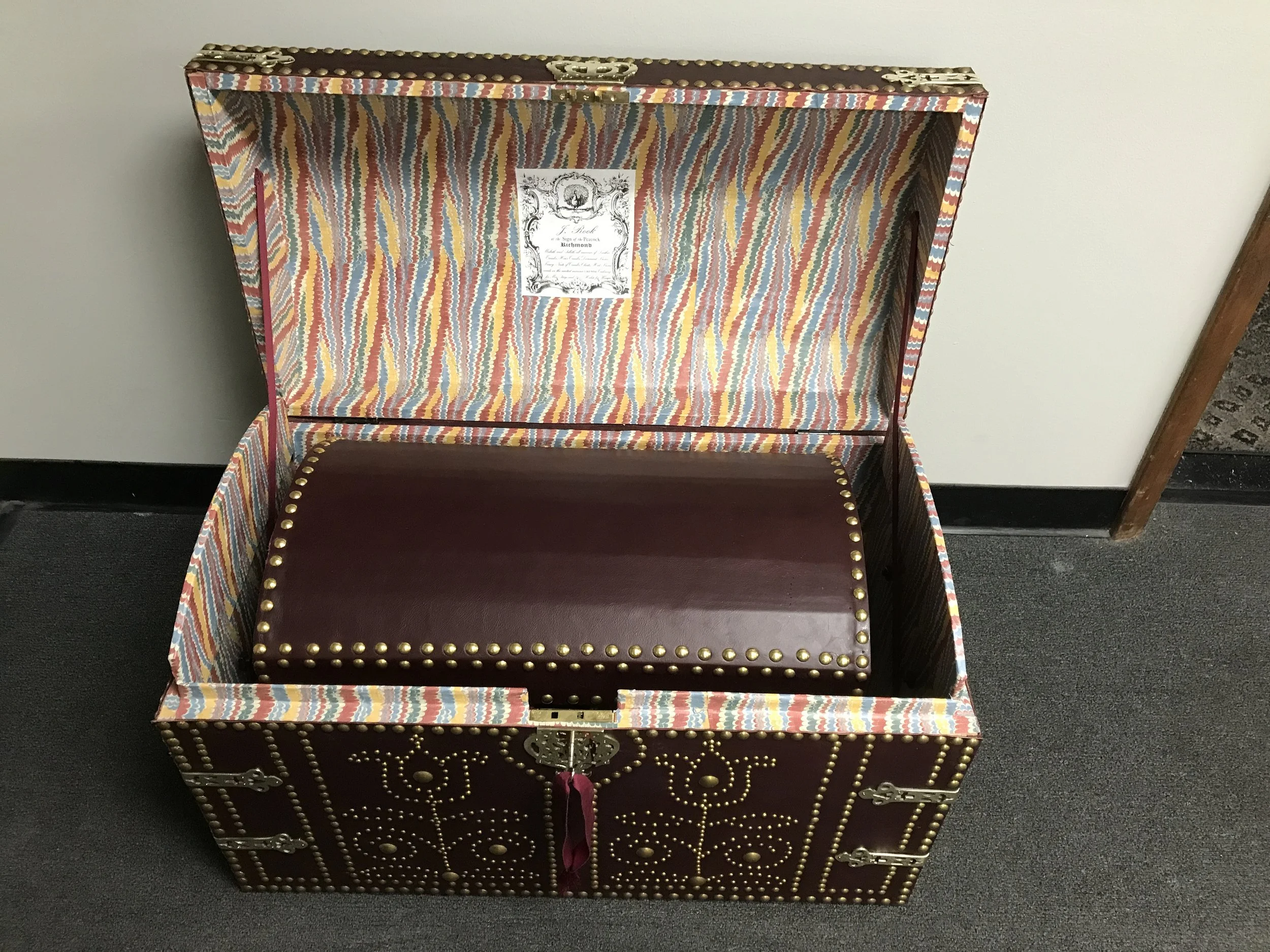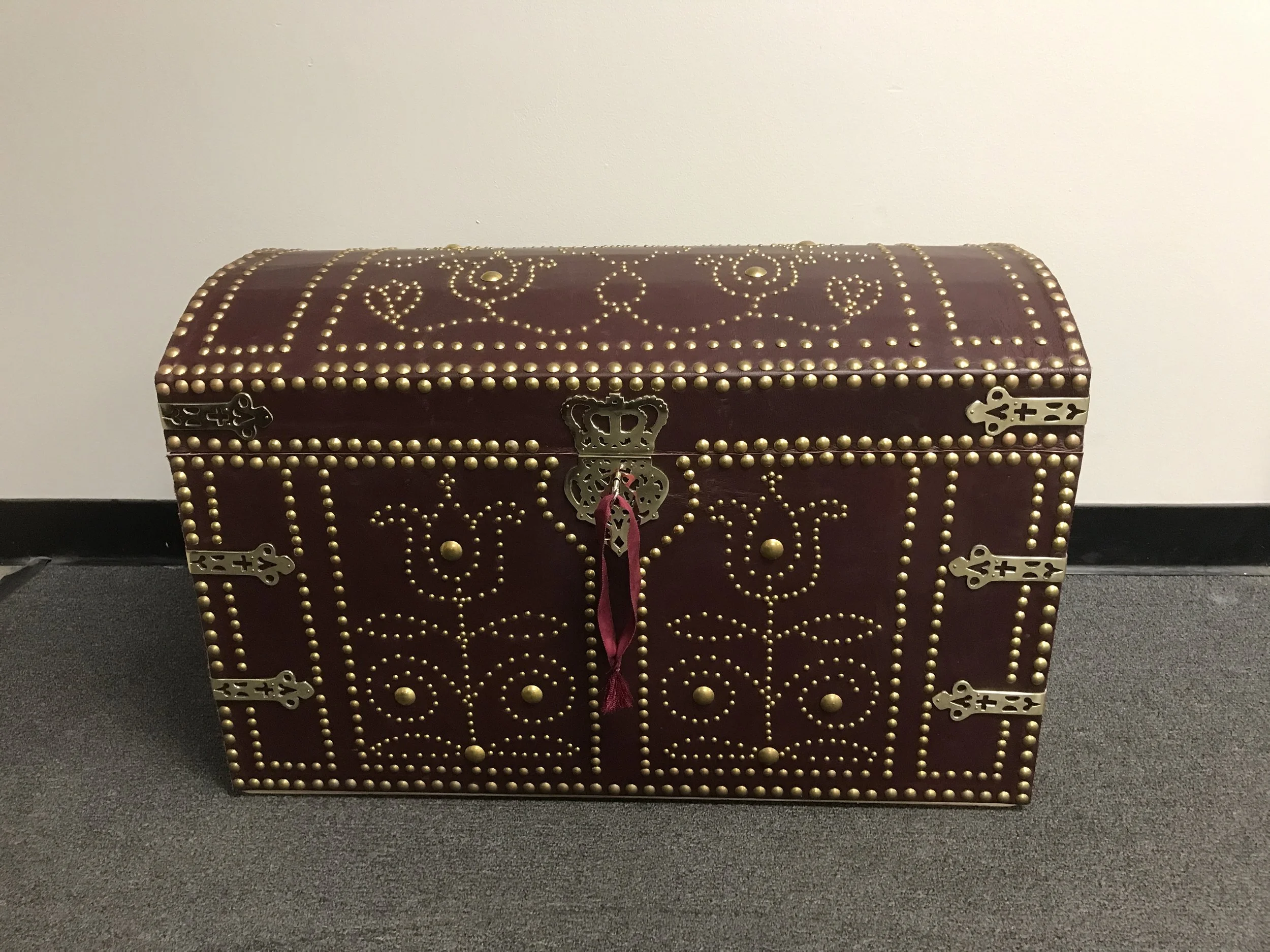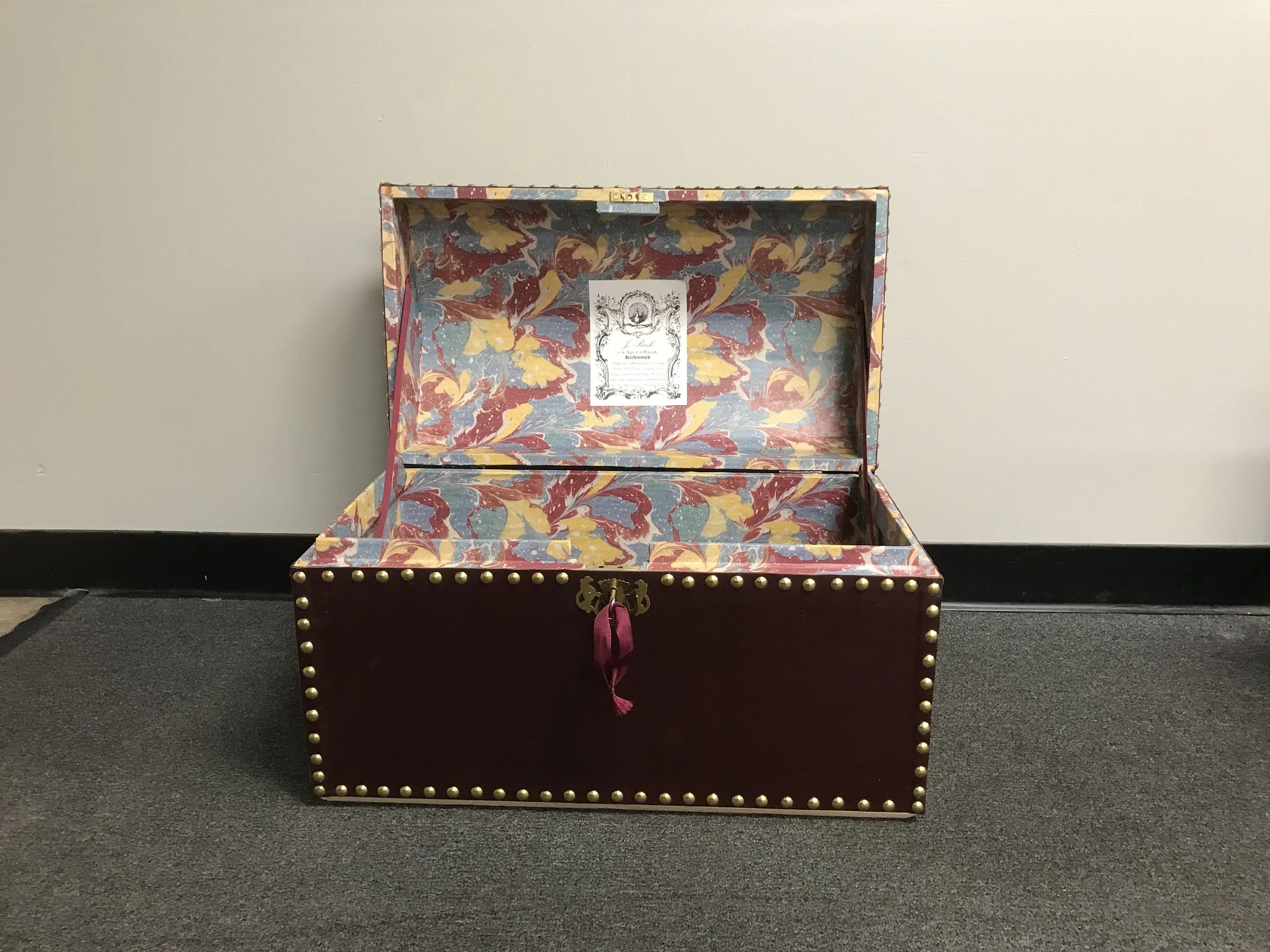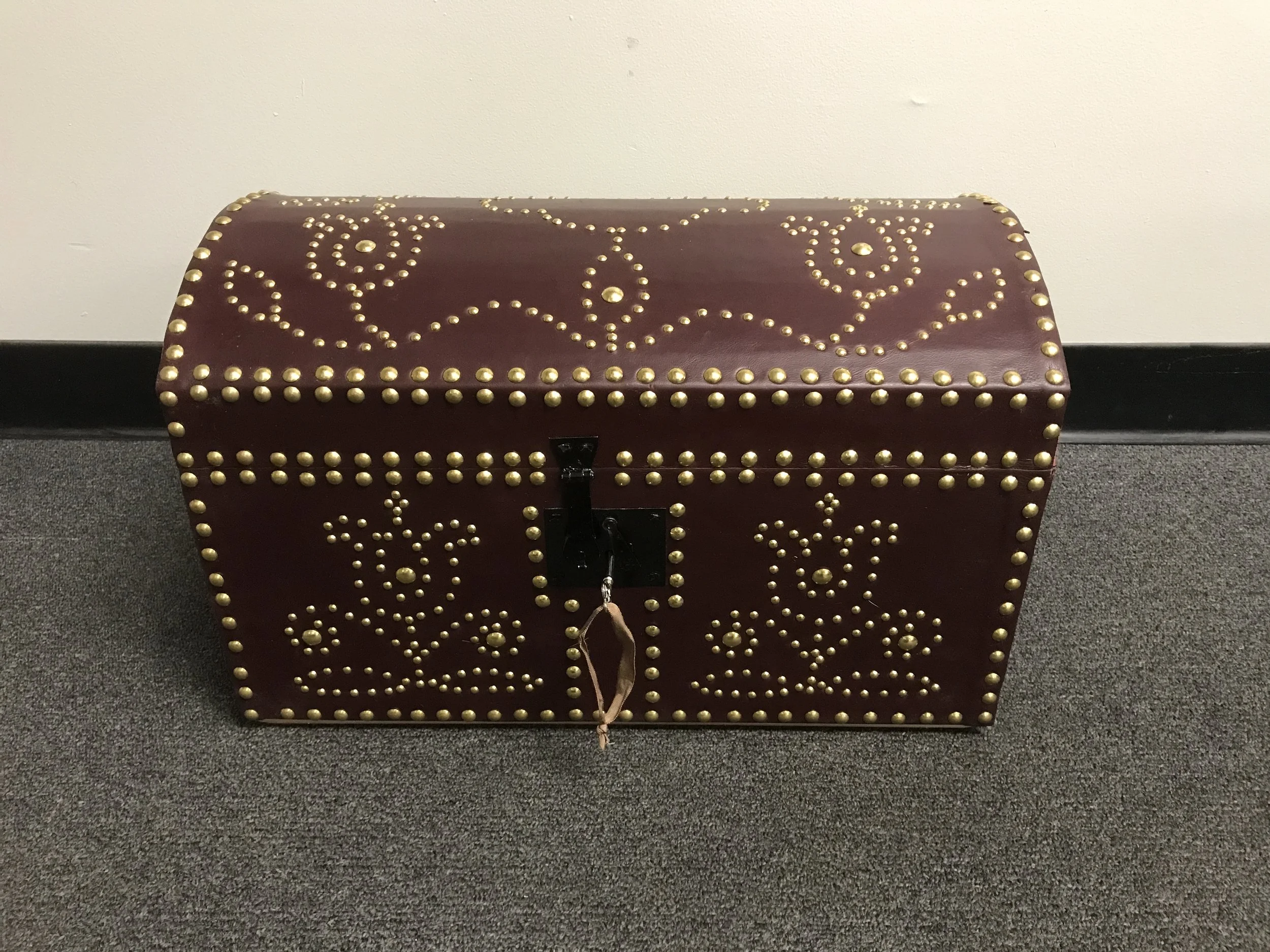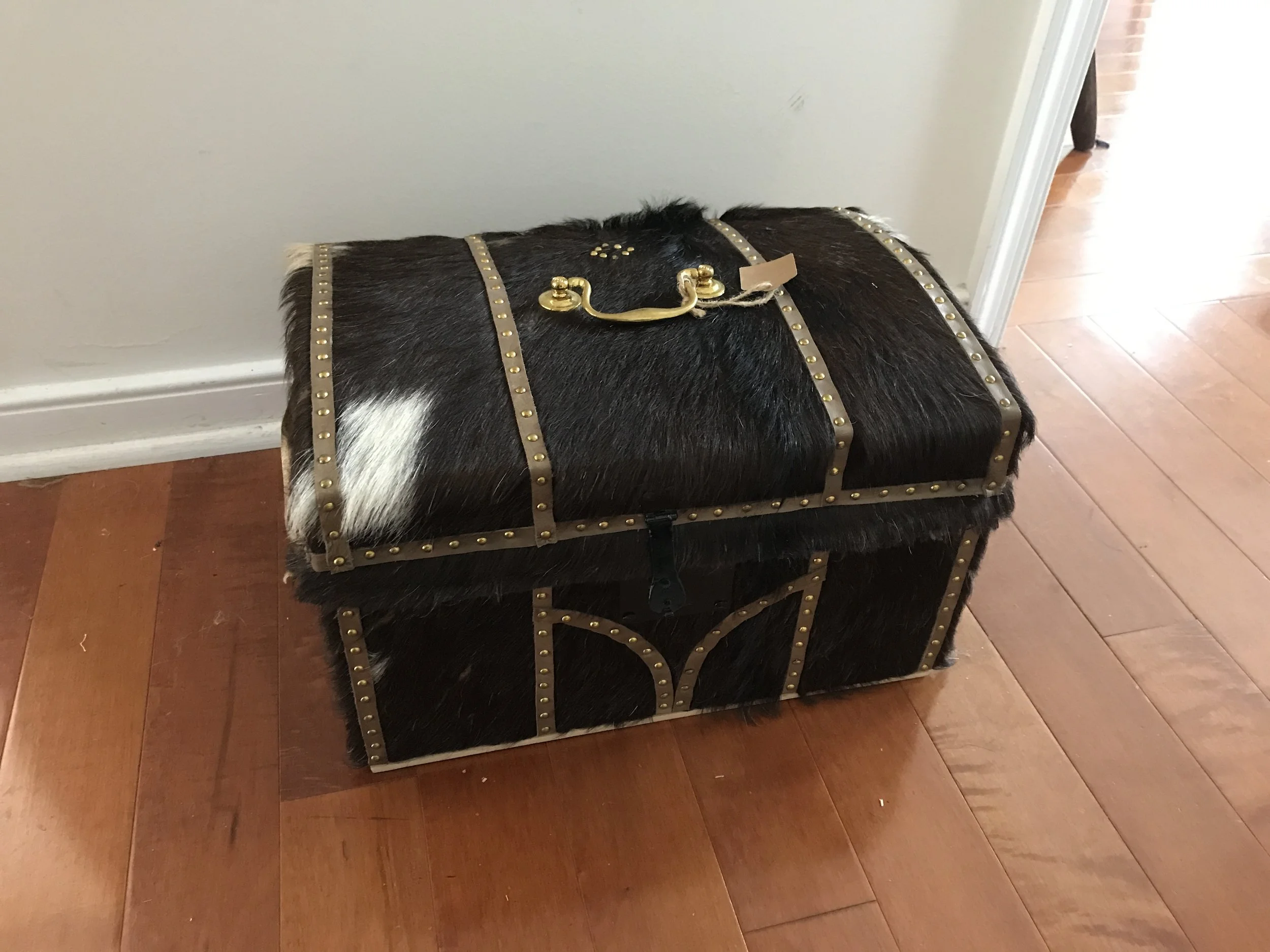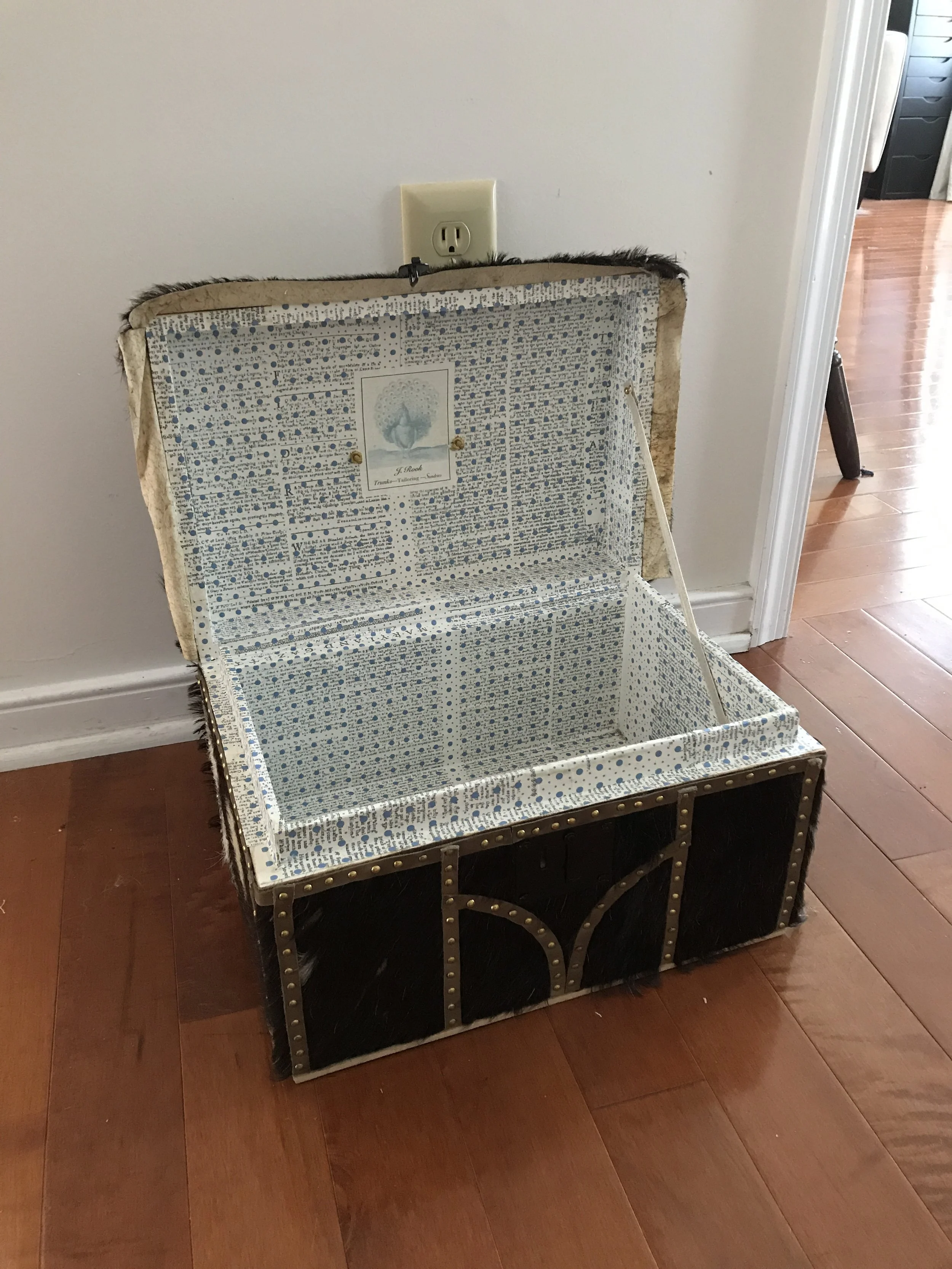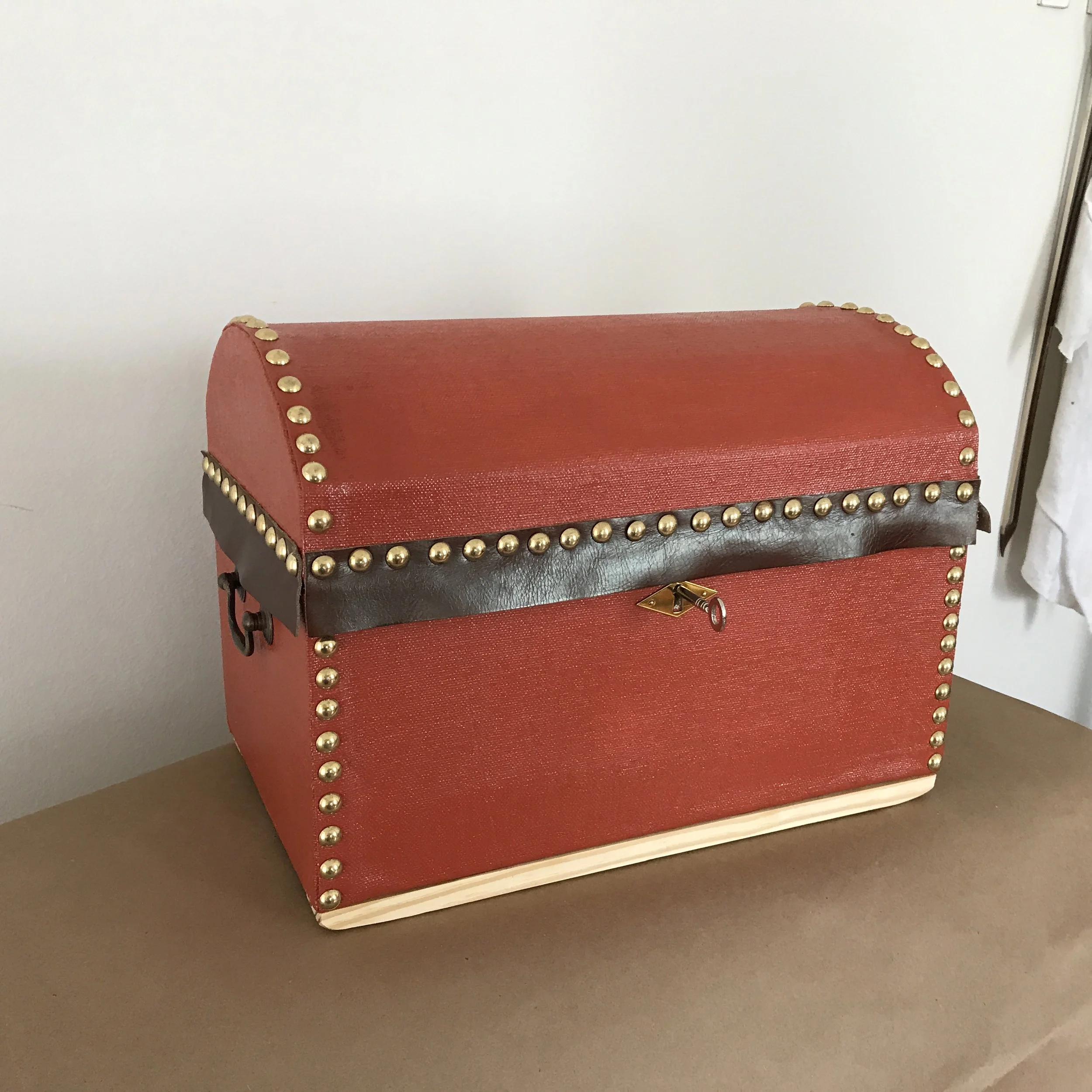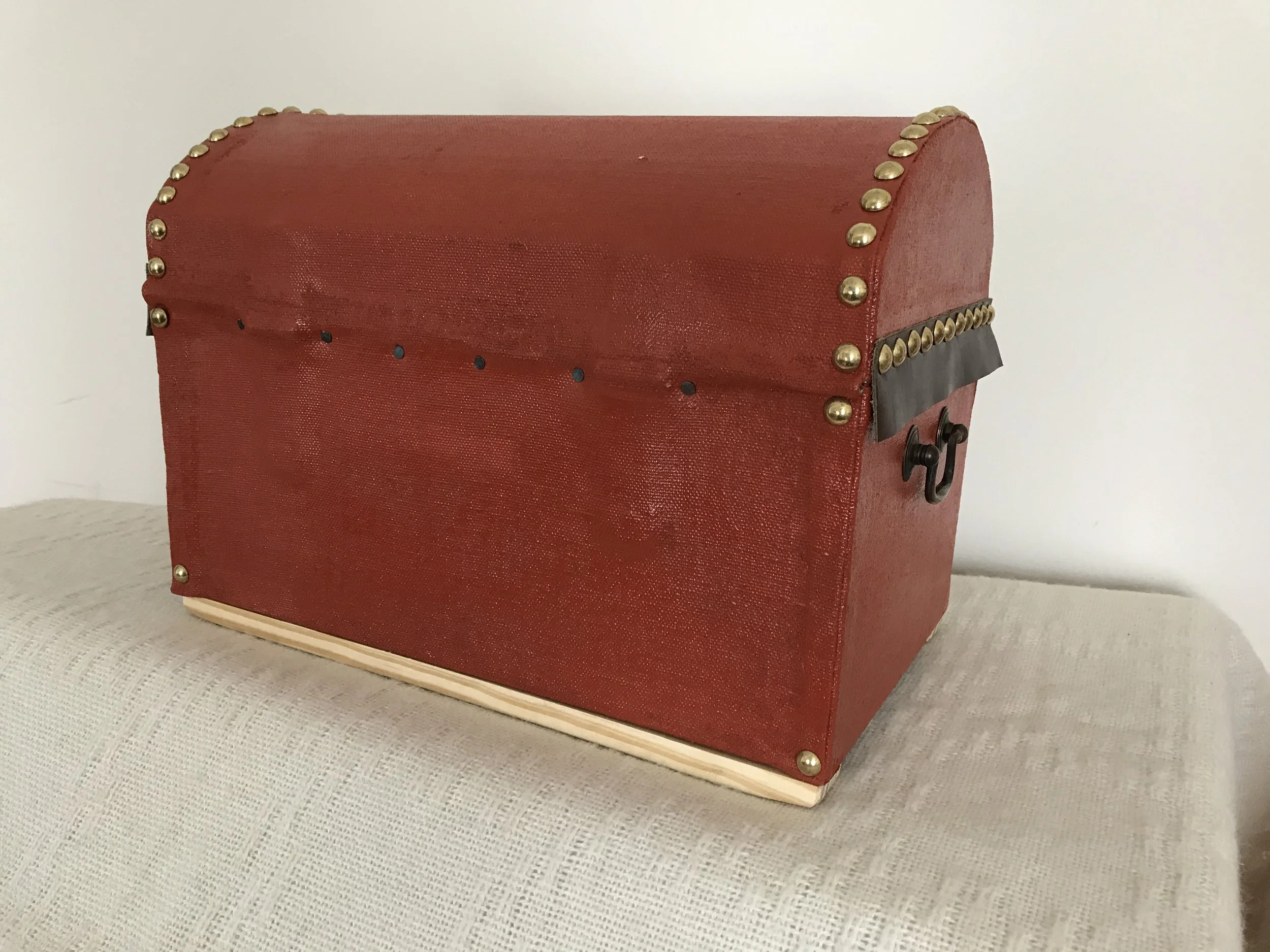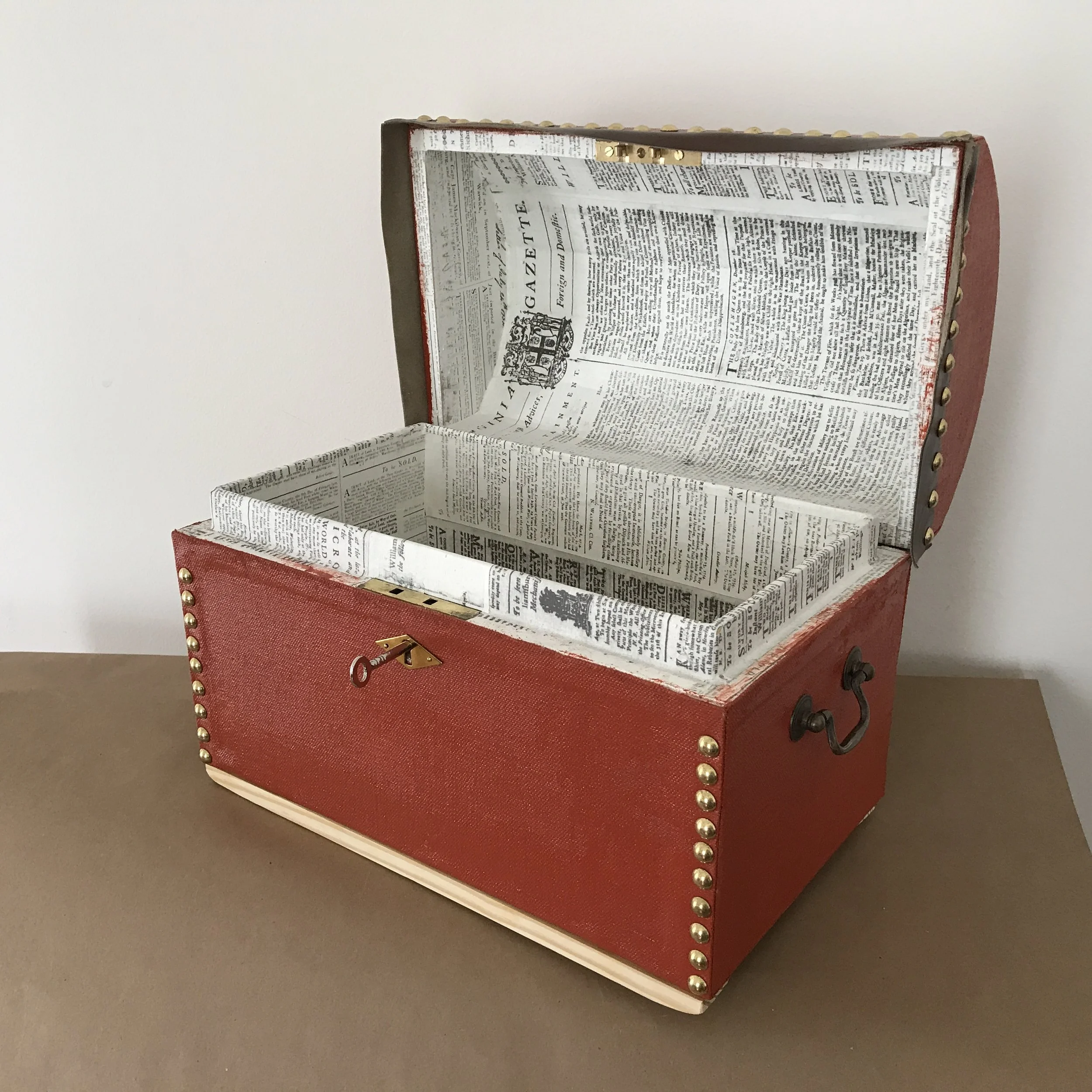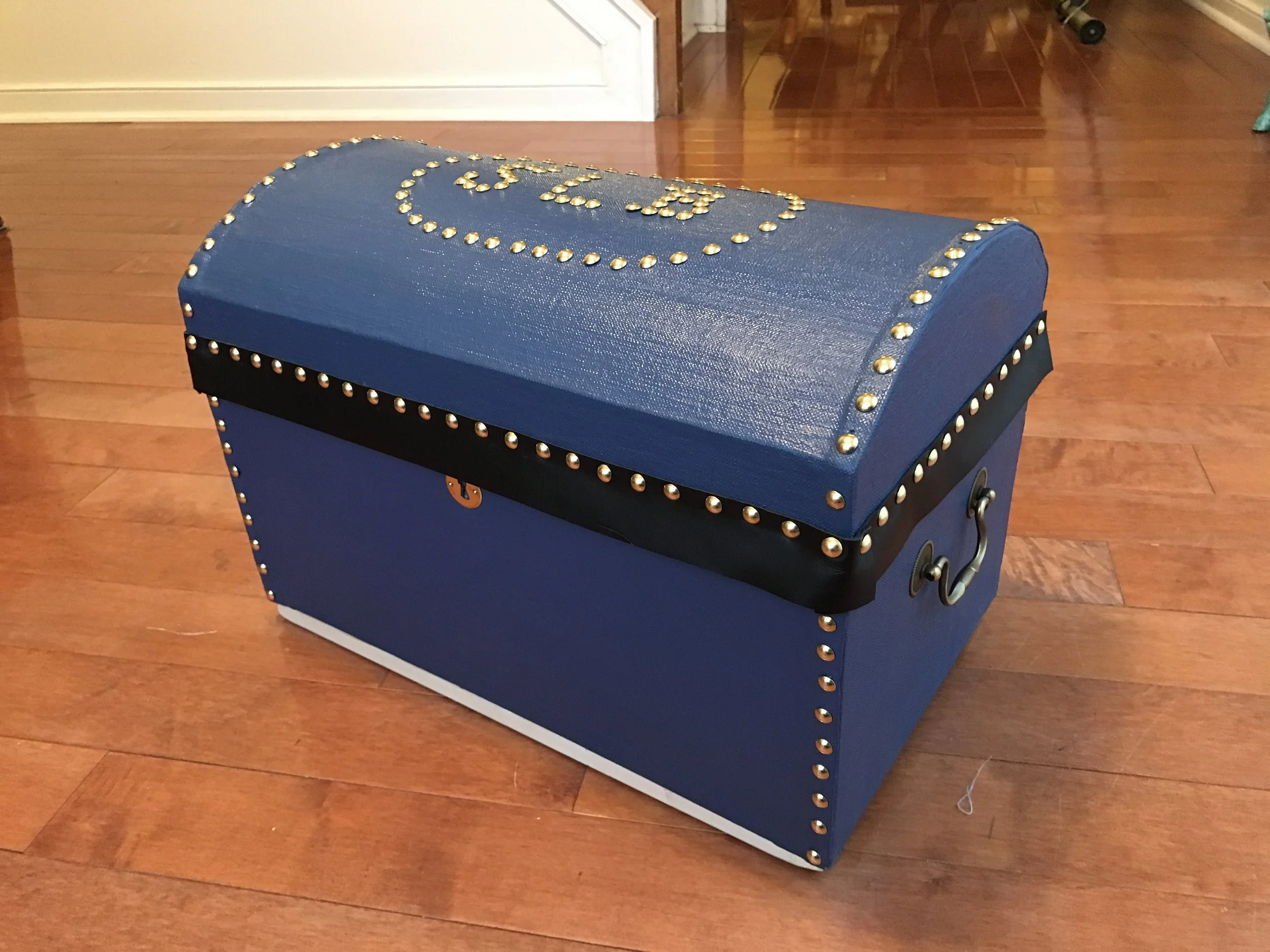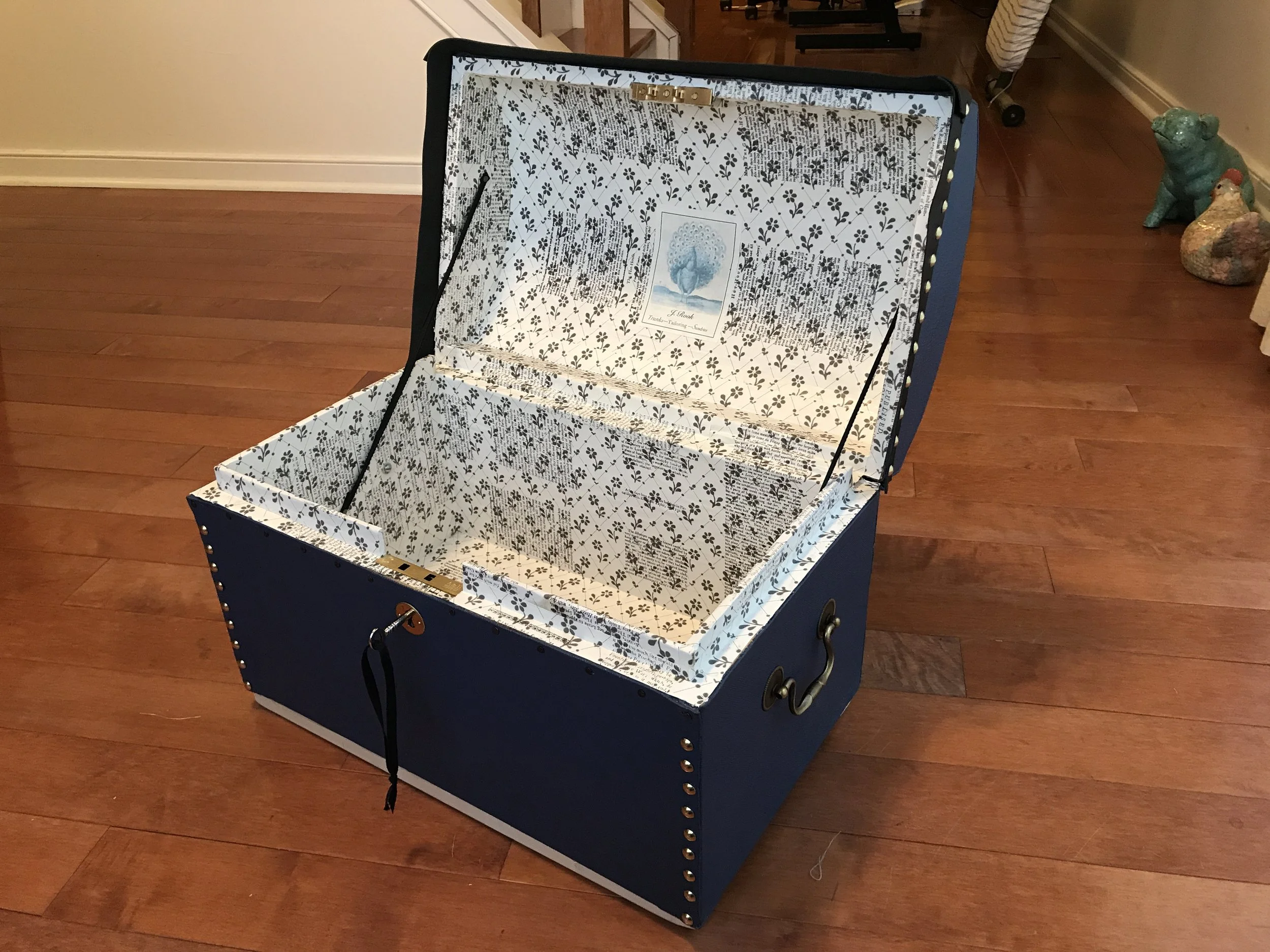PORTFOLIO
The trunks in these images are attempts at reproducing trunks from the eighteenth century. They are not intended to be exact copies, but to represent what was commonly done. For historical details and materials and methods of construction used in these examples, please refer to the appropriate pages on this website. Some of these may still be available to purchase; if not, they can be reproduced. You may visit me at an event, or contact me with any questions you may have.
Fancy Trunks
As in our modern times, eighteenth century culture was composed of a variety of social and economic levels. Within those levels, people made choices based on financial and practical considerations. These trunks represent what well-to-do people could afford and would use themselves; but not what would be in their kitchens.
Such trunks would be covered with costly and beautiful coverings and fittings, both inside and out. Leather was a common choice for exterior covering, and might be extensively ornamented with metal fittings. Interiors could be marbled paper, printed fabric, specially printed paper, or overprinted paper intended for linings of furniture.
Sensible, well-to-do trunks
What about the people who couldn’t afford leather? Didn’t they need trunks?
People who couldn’t or didn’t want to afford leather trunks could make the next less expensive choice - hide. Hide trunks, especially with the hair still on them, were actually less vulnerable to weather and travel conditions than leather ones. They usually had the owner’s initials on them in tacks, for identification purposes when using public conveyance.
Trunks with less pride of presence
And yet, there were people who couldn’t afford hide; and also people who didn’t want to spend the money on it. Perhaps it was only to be used in the kitchen to dissuade the servants from stealing the sugar. Perhaps it was to be used as camp furniture for soldiers.
Painted canvas is nearly as waterproof and sturdy a covering as hide, and far less expensive. Both canvas and paint were also readily available. Such a trunk, depending on its purpose, might be lined with a plain linen; but cast off newspapers or ruined books would probably have been more usual.
Painted Trunks
A trunk could be covered only with paint; but this was typically for a specific purpose, and often not intended for travel at all (which would really make it a chest, not a trunk).
The paint used for exterior purposes in the eighteenth century was typically linseed oil paint or what we now call “milk paint.” It provides very good protection against weather, but minimal protection from buffeting or from water leaking inside. Nonetheless, extant examples do exist. They may have originally belonged to people of humble origins, and kept as sentimental objects by their families.
Naked Trunks
Were trunks ever entirely naked? Well, yes and no. The short answer is, typically only sailors’ trunks were without coverings of any sort.
Place, time, culture, and purpose dictated these choices. We deal here mostly with English culture (including its colonies) in the eighteenth century.


